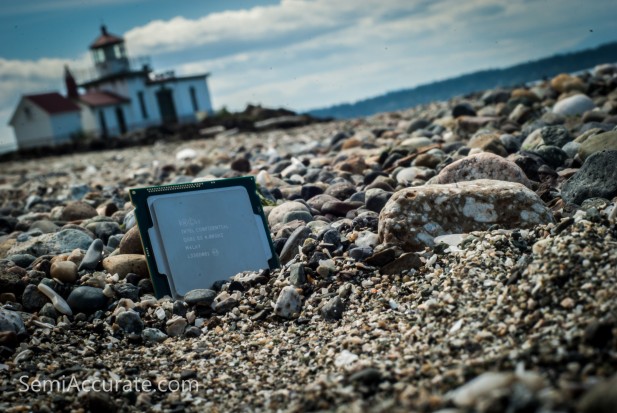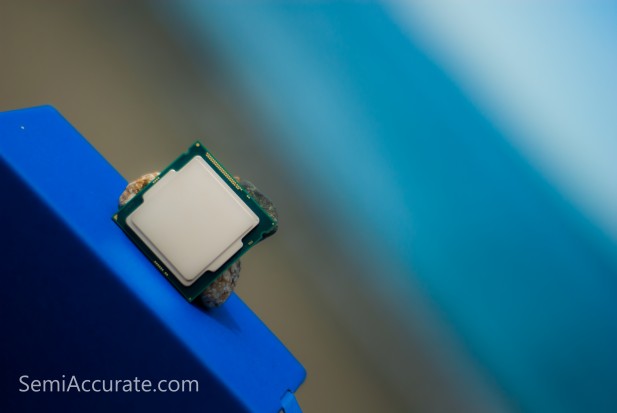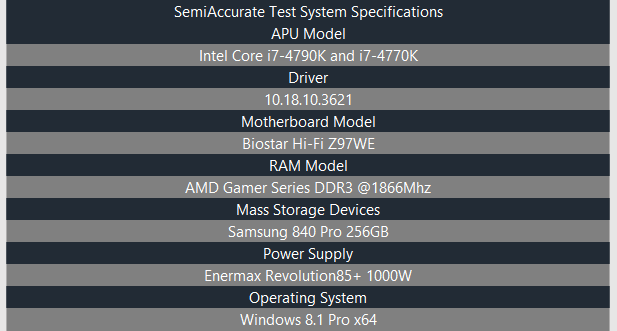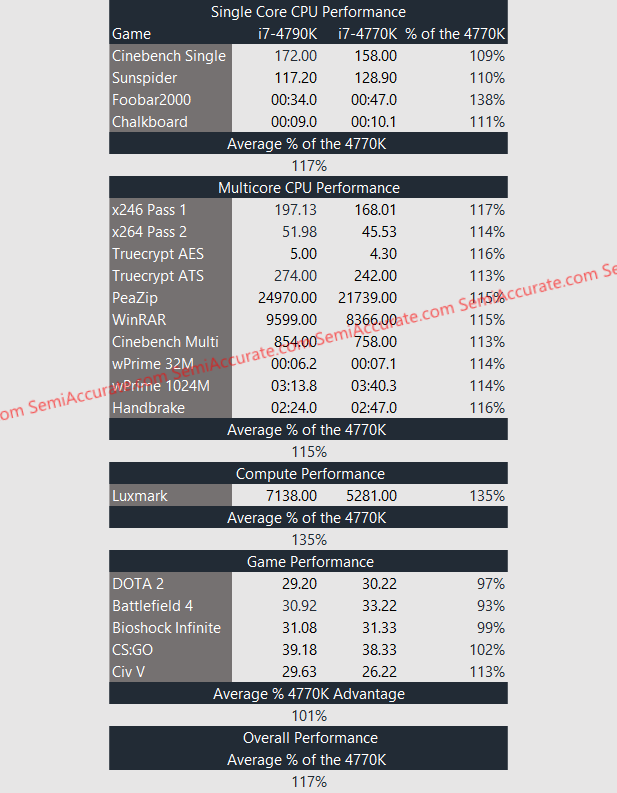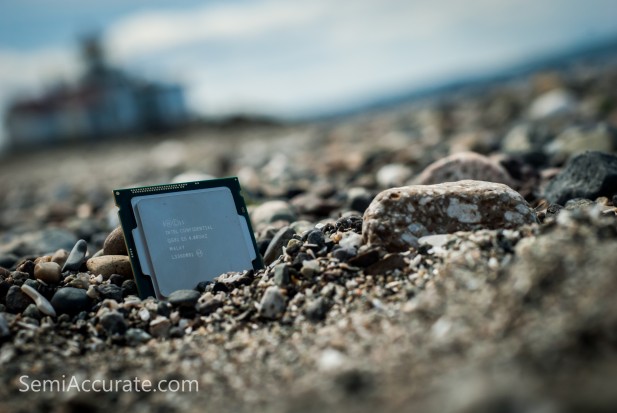Today we’ll be looking at Intel’s new Core i7-4790K codenamed Devil’s Canyon. We covered the changes that set the i7-4790K apart from other Haswell chips last week. In this article we’re going to be comparing the stock performance of the i7-4790K to that of the previous socket 1156 champion the i7-4770K. For those of you who may not remember the i7-4790K is the first consumer chip from Intel to ever have a 4.0 Ghz based clock. Almost a decade later Intel has finally eclipsed the clock speeds that it set with its Pentium 4 Extreme Edition processors.
The i7-4790K also turbos up to 4.4 Ghz, a speed at which it spent most of its time running at while we had it. It has a TDP of 84 Watts and the Intel HD 4600 GPU that we’ve spent quite a bit of time testing here at SemiAccurate. We’ll be testing this chip on Biostar’s Hi-FI Z97WE motherboard which we looked at a couple weeks ago. As far as subjective impressions go there is little to no difference between these two Intel chips. The user experience, installation, and hardware support requirements are all identical.
Here’s our test bed setup and as always you can find our raw benchmarking data and exact settings on Mega.
We’ll be using a pretty wide array of benchmarks in our testing with a focus on four major categories of performance: Single-threaded, Multi-threaded, Compute, and Gaming. Our Vertcoin-based GPU mining performance benchmark would not run on either of Intel’s chips so it’s missing from our results. Additionally our custom JPEG decoding benchmark ate itself during testing so it’s missing as well. We’ve also refocused our gaming benchmarks to look more at titles that are actually playable on this hardware.
Starting with single threaded performance the i7-4790K clearly takes the lead over its older cousin. The 4.4 Ghz turbo is no doubt at work here. Looking at multicore performance we can see a very solid advantage of about fifteen percent across all of our benchmarks. Moving to compute the i7-4790K wins big in Luxmark with a 35 percent advantage. In our gaming benchmarks this story gets much less interesting and the i7-4770K more or less ties our Devil’s Canyon wonder chip. All things considered the i7-4970K holds a 17 percent average performance advantage over the i7-4770K.
Considering the i7-4970K’s ~15 percent base clockspeed advantage over the i7-4770K our results shouldn’t be all that surprising. What is surprising though is that Intel waited until now to unleash this chip. If desktop Haswell had launched with this kind of stock performance it would have received a much warmer welcome last year from enthusiasts. In a lot of ways Devil’s Canyon and the i7-4790K rights the wrongs of, and disappointment surrounding, the i7-4770K. Enthusiasts will no doubt pleased with this chip and its i5-4690K counterpart. Intel’s finally done what it should have from the start and even as Haswell nears the end of its life, on the desktop it looks better than ever.S|A
Thomas Ryan
Latest posts by Thomas Ryan (see all)
- Intel’s Core i7-8700K: A Review - Oct 5, 2017
- Raijintek’s Thetis Window: A Case Review - Sep 28, 2017
- Intel’s Core i9-7980XE: A Review - Sep 25, 2017
- AMD’s Ryzen Pro and Ryzen Threadripper 1900X Come to Market - Aug 31, 2017
- Intel’s Core i9-7900X: A Review - Aug 24, 2017
